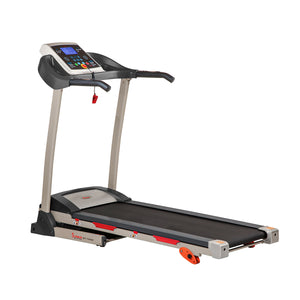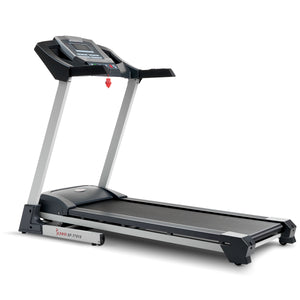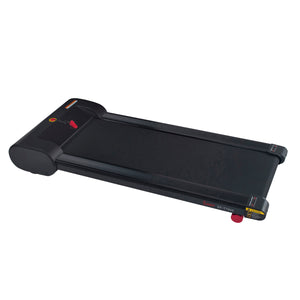Running is such a great way to get fit! As a beginner, getting started with a new running routine can be intimidating, but it doesn’t have to be hard. All it takes is a good pair of running shoes, and a willingness to get out and move at a pace that’s comfortable for you. If you’re ready to hit the ground running, literally, check out my top tips for runners below.
Train Smart
Start Slow
Starting something new is exciting! But there is a very fine line between excitement and getting carried away. It’s important to take things at your own pace and to gradually incorporate running into your regular routine.
A progressive running schedule, which takes into account a gradual increase in mileage is not just something recommended for beginners, it’s a method that even seasoned runners use in their training to ensure long-term sustainability of their routine.
A good rule of thumb to follow is to increase your total mileage no more than 10% each week of your training plan. That may not sound like much now, but once you get into your training, you’ll find it’s more than enough to give you a great workout while staying healthy and injury-free.
Use the Run-Walk Method
The Run-Walk method is a great way for new runners to get started, and for experienced runners to increase their speed. It doesn’t necessarily mean going on a run and then walking whenever you get tired. This method involves intentional periods of running, broken up by intentional periods of walking to help you build up your stamina.
As you get stronger and your workouts get easier, you can gradually increase the time spent running and decrease the time spent walking. Eventually, you’ll be able to easily run the full workout with no walking breaks! You can continue to use this method if you’d like to challenge yourself to run longer or farther. Remember, walking isn’t just for beginners. It can be an incredibly powerful training tool for increasing your overall cardiovascular fitness and running capacity.
Choose a Training Plan
Having a training plan is an awesome way to stay motivated. It gives you something to look forward to and a set schedule so you know exactly what your workout is and when you’re doing it. There are plenty of training plans out there, whether a 5K, 10K, half marathon, or even a marathon is your goal, there are a few key elements that would be a good place to start for beginners.
- Run 3 - 4 days a week
- Go on shorter runs (20 - 30 minutes) on the weekdays
- Go for a longer run (40+ minutes) on the weekend
- Use your off days to rest or cross train (more on that below)
- Run at a conversational pace
Get the Right Gear
Shoes & Socks
The running shoes you wear are incredibly important. Running in a shoe that’s wrong for your foot can lead to pain and injury. I recommend stopping in at a local running shoe store for a foot assessment. Many now offer high-tech assessments that will assess your foot strike and can recommend shoes that are most supportive and comfortable for your foot type.
It’s amazing how much a good pair of socks can make a difference on your run. It’s important to pick what’s most comfortable for you. Most people enjoy padded socks, with extra padding in the heel to avoid chafing and blistering on the heel and ankle area.
Sweat-Wicking Gear
The gear you wear during your runs can make all difference. Wear or invest in sweat-wicking materials which will help keep you cool on hot days. Loose, breathable gear will make it easier and more comfortable to move. If you’re having a hard time picking out the right clothes to wear or dropping the cash to invest in something new – remember, as long as you’re comfortable, that’s all that counts.
Set Your Playlist
A playlist can make or break your workout. Find something upbeat that puts you in a good mood to run, or if you’re looking to push your limits, find something more intense. Make sure you have your playlists set well in advance, so you’ll have no need to fidget with your phone while you’re running.
Fuel Your Body
Fuel for Workouts
Fueling before and after your workout is incredibly important for your overall performance and progress in your running routine. Your pre-workout snack will give you the energy you need to perform well and feel good during your run, and your post-workout snack will help your muscles recover. Plan your day accordingly so you can fuel and refuel well to give your body what it needs to run well.
In general, eat a snack 45 - 60 minutes before your run of a low GI (glycemic index) carb. Carbs like these include apples, peanuts, beans, lentils, chickpeas, whole wheat bread, oatmeal, sweet potatoes, most vegetables, and green bananas. Carbs are your body's preferred energy source during exercise, and low GI carbs, in particular, will help with sustainable energy levels throughout your workout, rather than a sugar high with a crash mid-workout.
After your workout, be sure to refuel within 2 hours of workout completion. The ideal post-workout snack is a blend of 4:1 carbohydrate to protein snack, which are nutrients your muscles need for post-workout recovery. Great examples of this include apples and peanut butter, a peanut butter and jelly sandwich, chocolate milk, or Greek yogurt with a handful of berries.
Make sure to eat a full meal within 4 hours of your workout. It’s not super important what’s on your plate, as long as it’s a well-balanced meal that contains healthy carbs, fats, and proteins.
Emphasize Fresh, Whole Foods
Your overall nutrition is a crucial part of the recovery and preparation process for any exercise routine. Considering what and how much you’re eating as a part of your training plan is just as important as the running itself. When exercise is added into any routine, nutrient deficiencies only become more apparent and detrimental. Fueling your body properly not just pre and post workout but throughout the day is essential to keep your body happy and reach your overall fitness goals.
An emphasis on fresh, whole foods, and balanced plates that contain healthy fats, carbs, and proteins will ensure you’re getting the nutrients you need. Focus on including fresh fruits and vegetables, leafy greens, whole grains, legumes (like beans and nuts), seeds, lean proteins, and healthy fats like olive oil, avocado, or fish in your diet.
If weight loss is a part of your overall goal, you’ll likely be consuming less calories, or not adding additional calories in your day to offset the calories burned during running. It’s important to note that while lower in calories, your diet can still properly fuel your body with the nutrients it needs to optimally perform, and even feel full. However, it makes the quality of calories that you do consume even more important since they are limited. For you, maximizing fresh, whole foods and a balanced diet is even more important. Limit processed, packaged, and sugary items that contain lots of empty calories.
Hydrate
Don’t forget to hydrate! Make sure you’re getting your 8 cups a day. When exercising, keep it simple - drink whenever you’re thirsty. If you’re on a shorter run, you likely won’t need to bring water with you unless it’s a really hot day. For longer runs, bring water with you to sip on along the way, or plan your running route around water fountains.
Most beginners won’t complete runs for longer than an hour, and for anything under an hour, water should be sufficient to keep you hydrated. For runs over an hour, adding in an electrolyte sports drink can be helpful for replenishing lost nutrients and keeping energy levels up. Just like consuming a small simple carb snack like running gels, dried fruit, or even a small handful of jellybeans after right around 5 miles or an hour can help keep your energy levels and overall performance up for longer workouts.
Prevent Injuries
Strength Training
Most running-related injuries are due to muscle imbalances or weakness. Basic strength training on your off-days can be very helpful to reduce the risk of injury and help you feel stronger during your runs. If you’re new to strength training, check out my Strength for Walkers and Runners article where I go through some of my favorite exercises to address weaknesses and improve strength in the ankle, knee, hip, core, and with your arm swing.
Mobility & Flexibility
Improving mobility and flexibility are both important for reducing the risk of injury and improving overall movement patterns. Mobility and flexibility are similar concepts but there are some crucial differences, and both belong in a well-balanced routine.
Flexibility involves lengthening your muscles to relieve tightness. Muscle tightness can become an issue for runners when it begins to impact their running stride and movement patterns which can lead to injury and pain up and down the chain from that tight muscle. Static stretching is a popular technique for promoting flexibility. Static stretching involves stretches that you hold in place for a period of time, generally 30-60 seconds.
Check out this video for some essential stretches for runners to help increase flexibility:
Mobility on the other hand involves actively moving through a range of motion with control. Flexibility is a part of mobility, but mobility also involves strength, coordination, and body awareness. Improving mobility will greatly improve your movement patterns and is a great way to warm up your body for exercise. Examples of mobility exercises include leg swings, and walking quad and hamstring stretches that are popular in warm-up routines.
Check out this video to learn some mobility exercises to increase your range of motion:
Foam Rolling
Finally, foam rolling is a great recovery technique to loosen up tight muscles and applies direct pressure to knots and adhesions in your muscles to help break up the tension - similar to a deep tissue massage. But you can do it yourself in the comfort of your own home! In general, roll over a tight muscle to identify knots or areas that are extra tight, stop at that spot and hold here for 30 - 90 seconds or until you feel a release in the muscle.
Check out this article for foam rolling exercises you can do at home to relieve tight muscles: Foam Rolling 101

























Add Your Name & Email
Please enter your name and email to continue.We won’t display your email publicly.